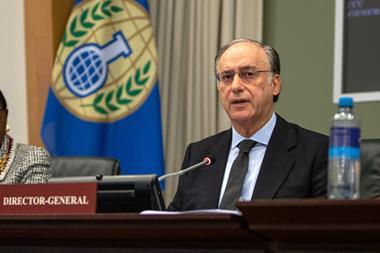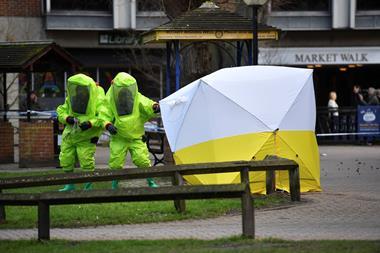The US has destroyed its last remaining chemical weapons stockpile. The Organisation for the Prohibition of Chemical Weapons (OPCW) has confirmed that, as a result, all of the world’s declared stockpiles have now been eliminated.
In 1997 the Chemical Weapons Convention (CWC) came into force, obligating member states to destroy any chemical weapon stockpiles that they held. The convention also prohibits the production of new chemical weapons and their precursors, with an exception for small quantities for research purposes.
In destroying its last stockpile at the Blue Grass Chemical Agent-Destruction Pilot Plant in Kentucky on 7 July, the US became the final CWC member to eliminate all of its remaining chemical weapons. To date, over 70,000 tonnes of chemical weapons have been destroyed globally under the CWC.
‘The end of destruction of all declared chemical weapons stockpiles is an important milestone for the organisation,’ said the OPCW’s director general, Fernando Arias. ‘It is a critical step towards achieving its mission to permanently eliminate all chemical weapons.’
‘This represents a historic success of multilateralism in the field of disarmament, and the work of a generation of diplomats and experts over the past 26 years,’ he added.
University of Leeds toxicologist Alistair Hay, who is an expert in the effects of chemical warfare agents, describes the milestone as a ‘magnificent achievement’.
‘Thirty years ago when the Chemical Weapons Convention (CWC) was signed governments agreed to destroy all declared stockpiles of the weapons,’ says Hay. ‘Successive governments of states which had these weapons kept that promise – and now all have been verifiably destroyed under the watchful eye of the OPCW. It is just brilliant. We are now very unlikely to see chemical weapons use in a major conflict between states, a threat which existed for over a hundred years.’
Even though all member states have now destroyed their declared chemical weapons, Hay notes that work remains to ensure that new weapons are not developed. ‘Governments also agreed to have their chemical industry inspected,’ says Hay. ‘This will have to continue – it is our major reassurance that countries are not making chemical weapons.’
And while 193 countries are parties to the CWC, four UN member states are still to fully sign up to the treaty’s obligations. South Sudan, Egypt and North Korea have not signed the CWC, while Israel has signed but not ratified the agreement. ‘At least two of these countries may have sizeable stockpiles of chemical weapons. All four need to come into the fold,’ says Hay. ‘There is also a real need to keep the CWC to the fore in everyone’s mind. Many states have signed the treaty but have no implementing legislation – they need encouragement to implement.’
In May, the OPCW opened its new ChemTech Centre, which features state-of-the-art laboratories for investigating alleged uses of chemical weapons. Arias said that the facility will enhance the organisation’s ability to address the threats posed by modern developments, including ‘new dangerous toxic chemicals, more sophisticated equipment and production methods, better means of delivery, and the interaction between chemistry, biology and artificial intelligence’.

















3 readers' comments